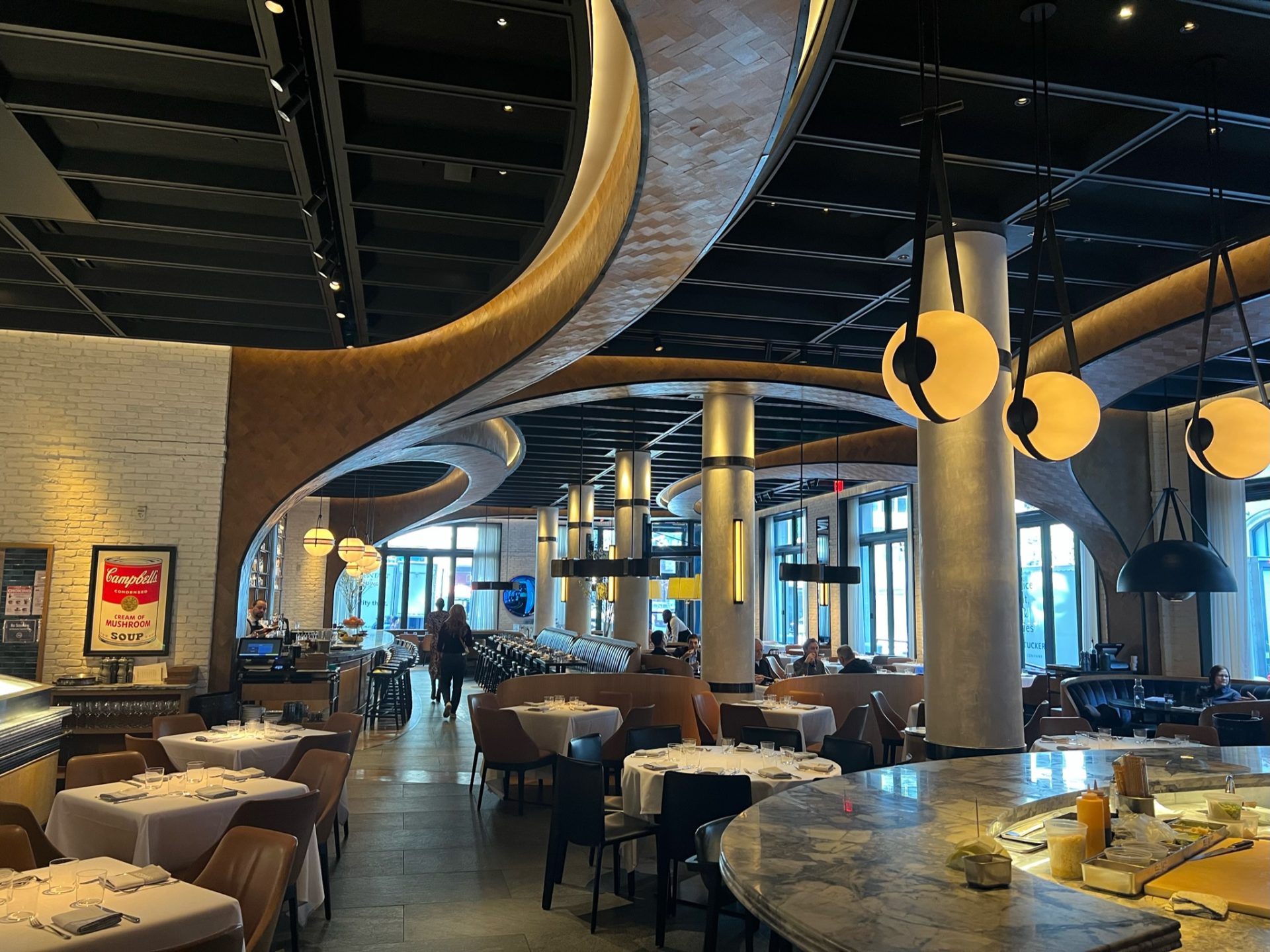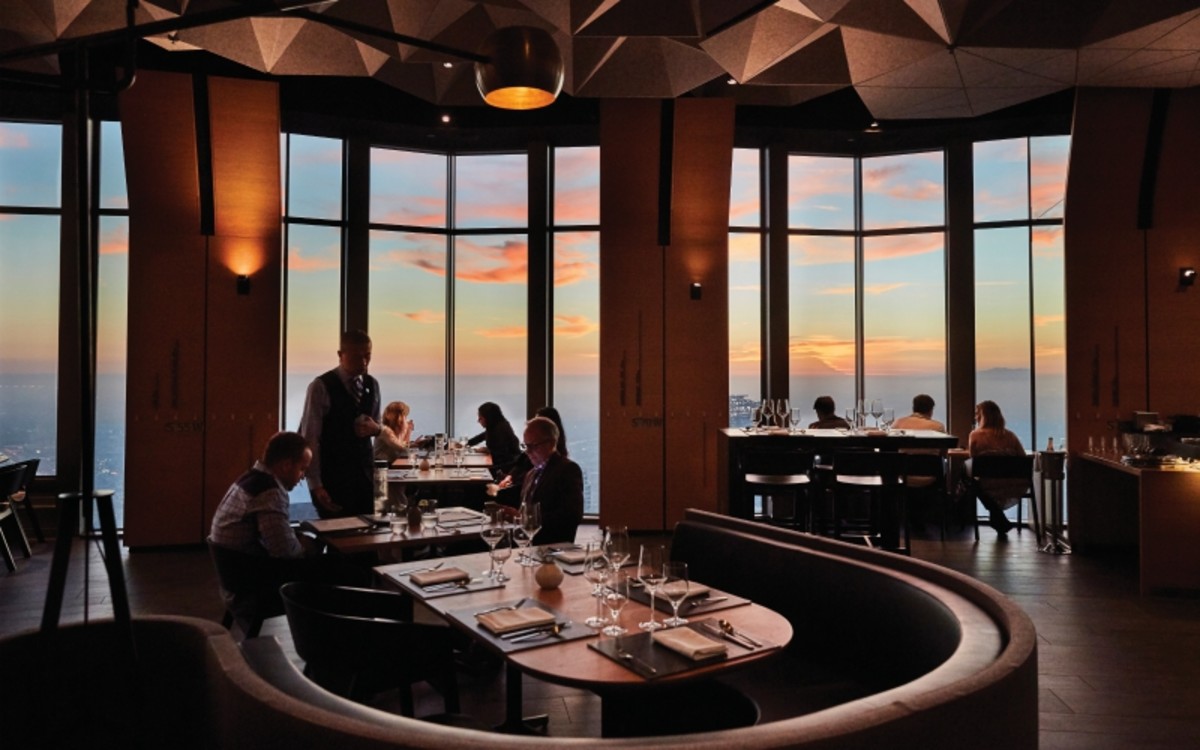Experience the Blend of Societies in Our Pan-Asian Dining establishment's Oriental Cuisine Offerings
In the ever-evolving world of gastronomy, our Pan-Asian dining establishment stands as a testament to the harmonious blend of culinary practices from across Asia. Each dish on our menu is a diligently crafted narrative, making use of the abundant heritage of Chinese, Japanese, Thai, Korean, and Vietnamese cuisines. As you explore the intricacies of our offerings, you'll experience a symphony of tastes that mirrors the vibrant diversity of these societies. Exactly how do these distinct cooking methods come with each other to create a combined yet diverse dining experience? This journey promises insights that prolong past plain taste.
Exploring Chinese Cooking Customs
Chinese culinary customs flaunt an abundant tapestry of flavors and techniques that reflect the country's huge geographical and social diversity. From the fiery spices of Sichuan cuisine to the fragile dim sum of Cantonese price, each area presents an unique cooking identification that has been developed over centuries. The ideology of balancing tastes-- wonderful, sour, bitter, spicy, and salty-- lies at the heart of Chinese food preparation, producing dishes that are not just scrumptious yet also unified.
Trick ingredients such as soy sauce, ginger, sesame, and garlic oil form the backbone of many typical dishes, adding to the distinct and aromatic profiles that specify Chinese food. Methods like stir-frying, steaming, and braising show the ability and creativity associated with Chinese food preparation, each method improving the natural tastes of the components.
Regional specialties, such as Peking duck from Beijing, the subtle, tasty tastes of Shanghai's soup dumplings, and the bold, extreme warmth of Sichuan hot pot, offer an insight into the cooking heritage of China. In a Pan-Asian restaurant setting, these traditional recipes can be adapted to integrate numerous impacts, using patrons a nuanced expedition of Chinese cooking creativity.
Savoring Japanese Delicacies

Start your culinary journey with sashimi, where the quality of the fish takes spotlight, chopped skillfully to boost its natural flavor. Our sushi offers an unified blend of vinegared rice and fresh fish and shellfish, a tribute to the subtlety of Japanese gastronomy. For a cozy, soothing experience, try our miso soup, a staple that symbolizes the umami-rich account of fermented soybeans.

Discovering Thai Taste Profiles
As we move from the refined elegance of Japanese food, the vibrant and vibrant flavors of Thai food preparation invite exploration. Thai cuisine is renowned for its harmonious balance of pleasant, sour, salted, and spicy components, producing a harmony of tastes that mesmerize the palate. Secret active ingredients like lemongrass, kaffir lime leaves, galangal, and Thai basil present aromatic intricacy, while fish sauce and shrimp paste provide deepness and umami.
One can not discuss Thai flavor profiles without discussing the iconic dishes that exemplify its culinary viewpoint. The celebrated Tom Yum soup, with its aromatic brew, integrates spicy, sour, and mouthwatering notes, providing a preference experience that is both comforting and stimulating. Best ambiance restaurants Islamabad. Similarly, Green Curry, recognized for its abundant coconut milk base, showcases the delicate interaction between sweetness and spiciness, boosted by fresh natural herbs and flavors
Thai food additionally positions a solid focus on structure, blending crispy veggies with tender meats or seafood, as seen in recipes like Som Tum (environment-friendly papaya salad) This balance of structures adds an added layer of pleasure to the already complex flavor accounts. Through these distinctive components, Thai cuisine provides a vibrant and memorable cooking trip.
Delighting In Korean Seasoning and Warm
Korean cuisine, with its emphasis on bold spices and intense heat, uses a special exploration of tastes unique chinese near me from its Eastern counterparts. At the heart of this culinary experience is gochujang, a fermented red chili paste that supplies a structure of wonderful warmth and deepness. Romantic restaurants Islamabad. This functional component is pivotal in dishes such as bibimbap and bulgogi, instilling them with its particular spicy-sweet profile
Another keystone of Korean spice is kimchi, a fermented vegetable dish most commonly made from napa cabbage and experienced with chili garlic, pepper, and ginger. Kimchi not just includes a piquant kick to any dish official site yet also provides probiotic advantages, making it a staple in Korean eating.
Moreover, Oriental bbq highlights the interplay of spice and warm with sauces that typically include gochugaru, a rugged chili powder. This boosts the flavors of smoked meats, creating a abundant and nuanced preference experience.
Our Pan-Asian dining establishment happily welcomes these aspects, using restaurants an authentic preference of Oriental heat and spice. Each meal is crafted to make sure that the lively tastes and textures of Oriental food shine through, supplying a memorable eating experience.
Tasting Vietnamese Freshness
Vietnamese food is renowned for its amazing freshness and dynamic, herbaceous tastes, creating a distinct cooking identity within Asia. This harmony is noticeable in recipes like pho, a great smelling noodle soup that incorporates fragrant herbs such as cilantro and basil with the abundant depth of a beef or poultry broth.
Quality is further exhibited in the famous summer season rolls, referred to as gỏi cuốn. These clear rice paper rolls are full of crisp veggies, pampano fresh natural herbs, and tender shrimp or pork, come with by a savory peanut dipping sauce. The fragile yet durable flavors emphasize the value Vietnamese food put on fresh components.
Our Pan-Asian dining establishment commemorates this cooking custom by sourcing the finest components to recreate authentic Vietnamese dishes. The emphasis on herbs and fresh fruit and vegetables guarantees that each dish is not only aesthetically appealing however additionally a testament to the dynamic society where it comes from. Experience Vietnamese freshness with us, where every bite informs a tale of tradition and taste.
Conclusion
The Pan-Asian restaurant uses a distinct culinary experience by sympathetically blending the rich practices of Chinese, Japanese, Thai, Korean, and Vietnamese cuisines. Each dish is thoroughly crafted to stress the distinctive methods and authentic ingredients of these diverse cultures, producing a cohesive yet diverse gastronomic journey. With a concentrate on daring, equilibrium, and quality, the restaurant transcends social borders, offering diners with an exemplary blend of tastes that celebrates the essence of Asian cooking heritage.
While Japanese food is renowned for its simpleness and style, it likewise offers a depth of flavor accomplished through careful prep work and a regard for seasonal ingredients.As we relocate from the improved beauty of Japanese food, the vibrant and bold flavors of Thai cooking welcome exploration.One can not discuss Thai flavor profiles without pointing out the iconic recipes that exhibit its cooking viewpoint.Korean food, with its emphasis on vibrant spices and fiery warmth, provides a special exploration of tastes distinct from its Eastern equivalents.Vietnamese food is renowned for its remarkable quality and vivid, floral flavors, producing a distinctive cooking identification within Asia.